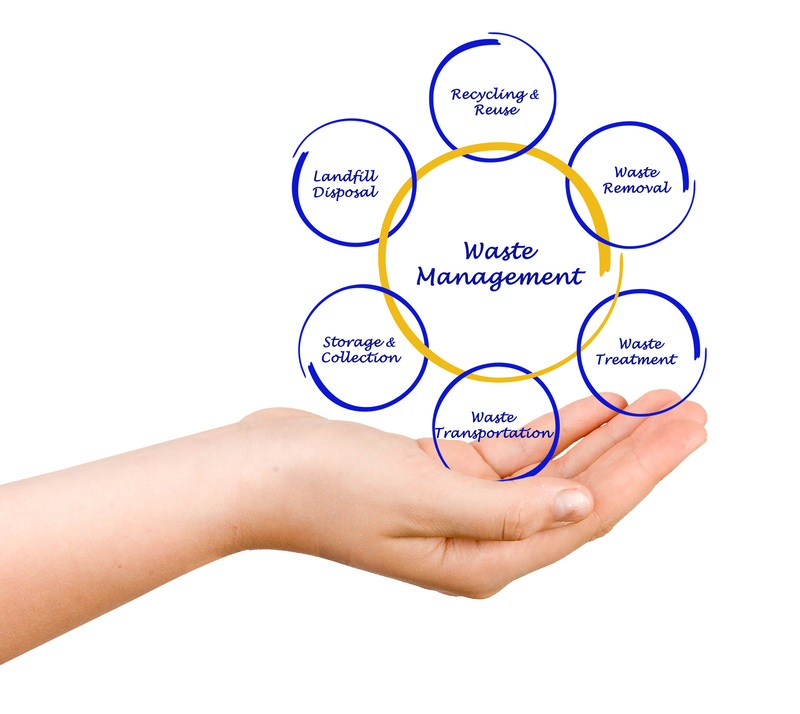Minimizing Waste: How to Responsibly Dispose of PPE Items
Personal Protective Equipment (PPE) such as masks, gloves, face shields, and gowns have become essential in everyday life and work environments, especially since the onset of the global pandemic. While these items play a crucial role in protecting public health, their sheer volume has presented significant environmental challenges. Improper disposal of PPE has contributed to increased waste generation, landfill overflow, and pollution in water bodies and natural habitats.
This comprehensive guide will offer actionable tips and best practices for responsible PPE disposal, with a spotlight on minimizing waste and environmental impact. Dive in to discover how you can make eco-conscious choices while maintaining safety standards.
Understanding the PPE Waste Problem
PPE items are typically made from synthetic materials like polypropylene, latex, and polycarbonate, designed for single use due to contamination risks. According to recent studies:
- Billions of disposable masks and gloves are used globally each month.
- PPE waste can take hundreds of years to decompose in landfills.
- Improperly discarded PPE often ends up in oceans, harming wildlife and ecosystems.
Therefore, minimizing and responsibly disposing of PPE waste is a public responsibility that protects both health and the environment.

Types of PPE Waste
Before delving into disposal methods, it's helpful to distinguish the several common types of PPE items:
- Disposable Face Masks - Usually made from polypropylene.
- Gloves - Latex, nitrile, or vinyl disposable gloves.
- Face Shields & Goggles - Often reusable, but treated as waste after heavy contamination.
- Protective Gowns & Aprons - Polyethylene or other plastics.
- Shoe Covers & Hair Nets - Plastic or synthetic fabric.
Hazards of Improper PPE Disposal
- Spread of infectious diseases if contaminated items enter public spaces.
- Environmental pollution, especially with non-biodegradable plastics.
- Threats to wildlife mistaking PPE for food or getting entangled.
- Strain on municipal waste systems.
Step-by-Step Guide: How to Dispose of PPE Responsibly
Proper PPE waste management involves a few essential steps. Here's how you can minimize waste and ensure your actions protect the community and planet:
1. Reduce Unnecessary Use
- Choose reusable PPE wherever appropriate (cloth masks, washable gowns).
- Avoid hoarding or overusing single-use items when risks are low.
- Encourage proper usage to extend lifespan without compromising safety.
2. Segregate Your Waste
- Designate a separate bin for PPE waste. Don't mix used PPE with regular household recyclables or compostables.
- Label your bin clearly: "PPE Waste Only."
- For business and medical facilities, utilize color-coded or biohazard-labeled bins as mandated by local regulations.
3. Prepare PPE Items for Disposal
- Do not attempt to clean or reuse single-use PPE unless specified by the manufacturer.
- Carefully fold and contain used masks, gloves, and other items inside another bag to prevent exposure to waste handlers.
- Seal waste bags tightly before placing in the appropriate disposal bin.
4. Follow Local Disposal Guidelines
- Research your local waste management regulations. Many municipalities have guidelines for PPE collection and waste minimization.
- Some cities offer special collection points for PPE waste--utilize them when available.
- For contaminated PPE (from medical, quarantine, or COVID-positive environments), strictly adhere to hazardous waste protocols.
5. Never Litter or Flush PPE
- Never throw PPE onto streets, public parks, or natural environments.
- Do not flush masks, gloves, or wipes down the toilet as they can clog systems and pollute water sources.
6. Protect Waste Collectors
- Double-bag PPE waste, especially if contaminated.
- Wash your hands before and after handling PPE waste, even when using gloves.
- Alert waste collection services if disposing of PPE from a quarantined or infected household.
Minimizing Waste: Tips for Sustainable PPE Use
Choose Reusable PPE Options
- Invest in high-quality cloth masks that are washable and long-lasting.
- Where possible, opt for reusable face shields and goggles that can be sanitized.
- Use washable fabric gowns for low-risk environments instead of disposables.
Look for Eco-Friendly PPE Products
- Purchase masks and gloves made from bioplastics or compostable materials.
- Check for certifications from regulatory or environmental organizations.
- Support brands committed to sustainable packaging and responsible manufacturing practices.
Participate in PPE Recycling Initiatives
- Some organizations offer PPE recycling or upcycling programs--look for drop-off points in your area.
- Mail-back programs or collection boxes are becoming popular for hard-to-recycle items.
- Always clean and store recyclable PPE separately and uncontaminated.
Educate Others
- Share information about responsible PPE disposal in your community, at work, or on social media.
- Encourage employers and organizations to adopt green policies and offer PPE disposal stations.
- Engage with local government to support waste minimization measures.
Innovations in PPE Waste Management
As PPE waste has increased globally, researchers and companies are developing innovative methods to handle the growing load:
Recycling and Upcycling Projects
- Some companies now accept disposable masks, gloves, and gowns for conversion into construction materials, park benches, and road surfaces.
- Pilot programs in several cities convert PPE plastic into fuel or reusable raw materials.
Biodegradable and Compostable PPE
- New technologies are creating masks and gloves from natural fibers or biopolymers that break down quicker in the environment.
- Compostable gown and apron designs are entering the healthcare industry to reduce landfill load.
Smart Bin Technology
- Sensor-operated bins for touchless PPE disposal lower contamination risks and encourage proper separation.
- Monitoring systems alert waste managers when bins are ready for collection, improving efficiency.
Impact of Responsible PPE Disposal
When you make the effort to properly dispose of PPE waste, the positive outcomes are far-reaching:
- Reduced environmental pollution and plastic waste in oceans and landfills.
- Improved public health by lowering the risk of disease transmission during waste collection.
- Cleaner communities and public spaces, free from littered masks and gloves.
- Support for a circular economy through recycling and upcycling measures.
PPE Disposal Dos and Don'ts
- DO: Always dispose of PPE in a designated waste bin, following local guidelines.
- DO: Use reusable PPE options where safe and feasible.
- DO: Educate family, friends, and coworkers about responsible PPE disposal.
- DON'T: Throw masks, gloves, or wipes into the commingled recycling or compost bins if they're contaminated or non-recyclable.
- DON'T: Litter PPE outdoors or in public spaces.
- DON'T: Flush PPE items down toilets or drains.
Frequently Asked Questions About PPE Waste Minimization
Can PPE Items Be Recycled?
Most single-use PPE--like disposable masks and gloves--cannot be recycled through standard household recycling programs due to contamination and material composition. Specialized recycling programs do exist in some regions, so inquire with your local waste authority or look for reputable mail-in programs.
What Should I Do With Used PPE at Home?
Place used PPE in a dedicated, lined waste bin and seal it inside a plastic bag before discarding in your regular trash. Never leave PPE loose or mixed with recyclables.
How Should Workplaces Handle Large Volumes of PPE Waste?
Employers should provide clearly marked PPE waste bins at strategic locations and arrange for frequent, safe collection and disposal. Consult OSHA and local waste management guidelines for medical or hazardous waste.
Are Cloth Masks Better for the Environment?
Yes--reusable cloth masks generate significantly less waste than single-use masks. Wash and maintain reusable PPE according to manufacturer instructions for optimal performance and longevity.

Conclusion: Your Role in Minimizing PPE Waste
While PPE items remain vital for safety during pandemics and other health crises, we must adopt sustainable, responsible habits to minimize their environmental footprint. From reducing unnecessary use and choosing reusable products to segregating waste and participating in recycling initiatives, every individual and organization plays a crucial role in addressing PPE pollution.
Make it a priority to dispose of PPE waste properly, educate those around you, and advocate for greener solutions in your community. By choosing conscious actions today, we can protect the health of people and the planet for generations to come.
Resources for Further Learning
- CDC Guidance on PPE Disposal
- WHO: The COVID-19 Waste Problem
- EPA: Managing and Reducing Waste
- Innovations in PPE Waste Recycling
Together, let's make minimizing PPE waste a part of our daily routine for a healthier planet!
